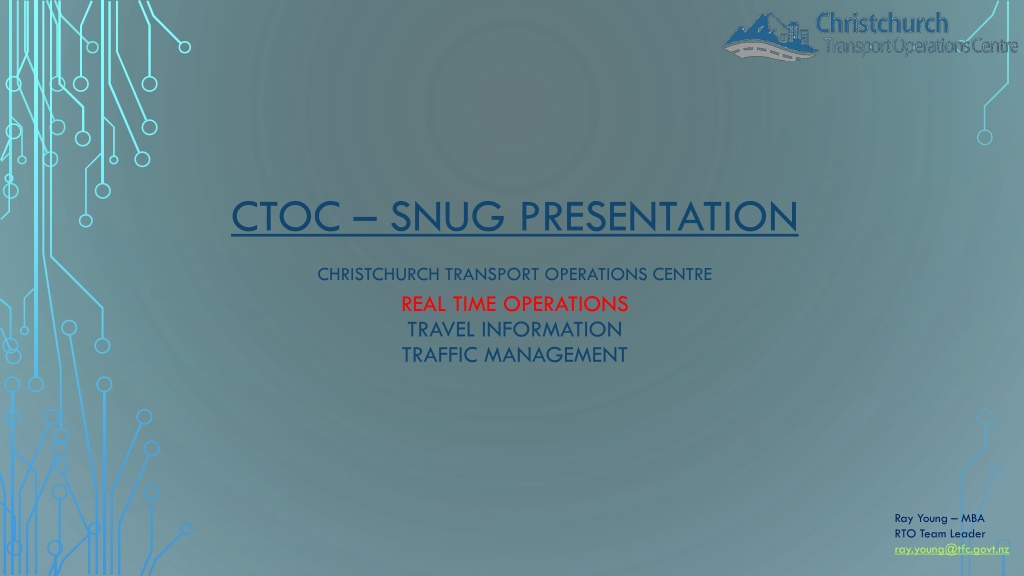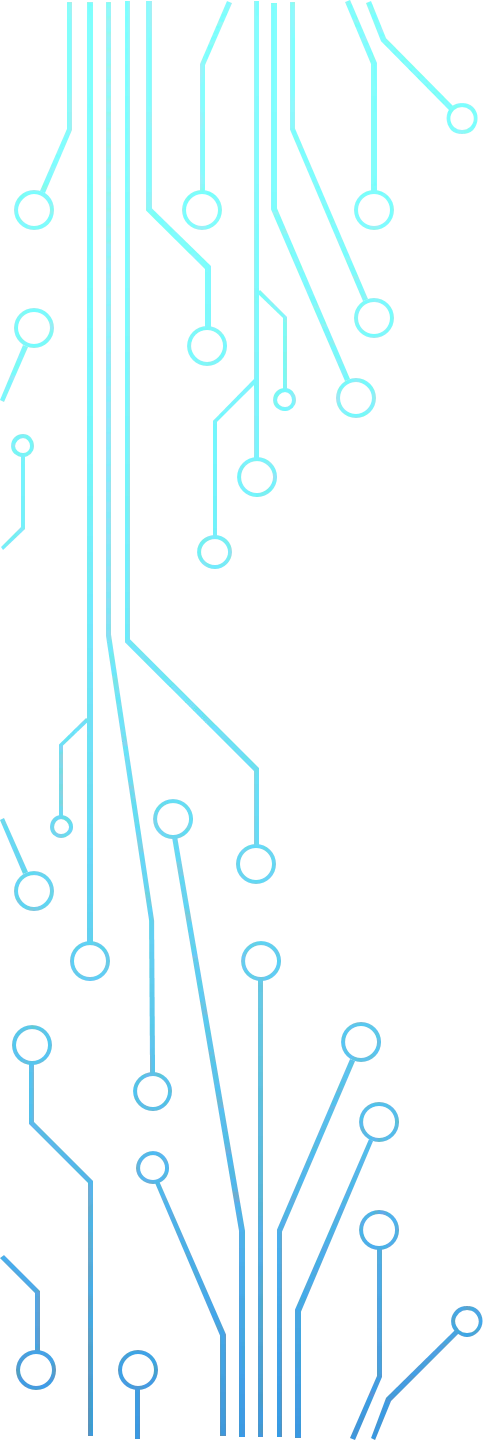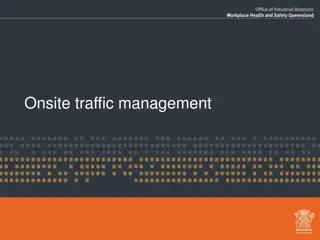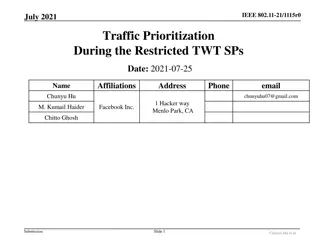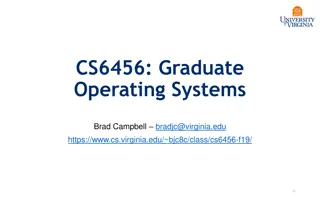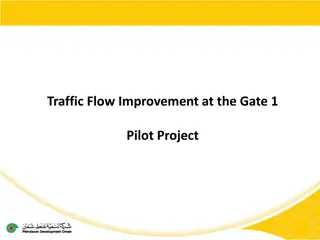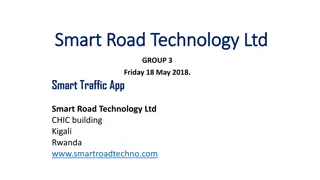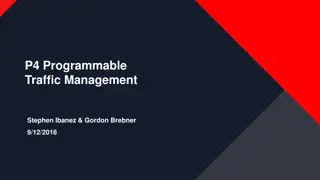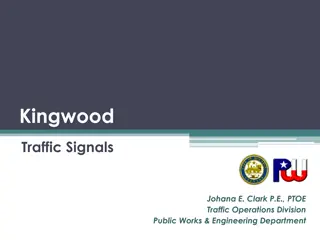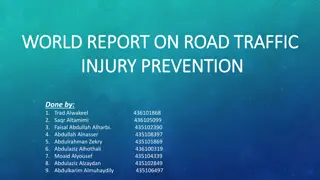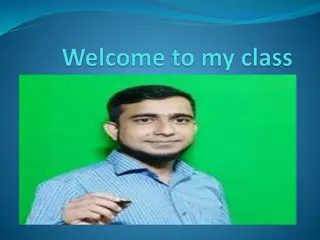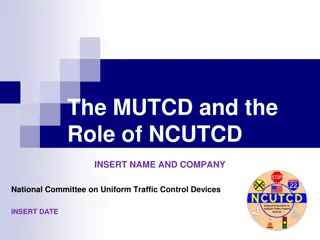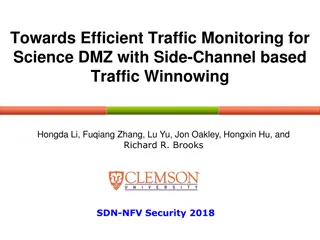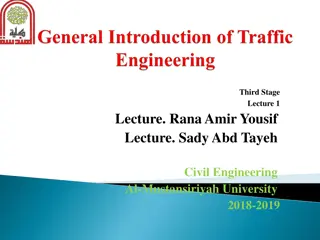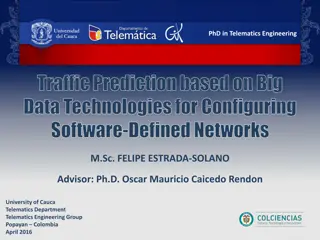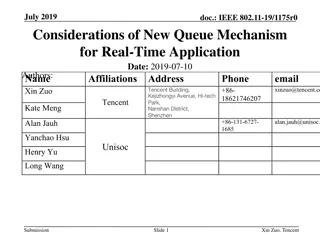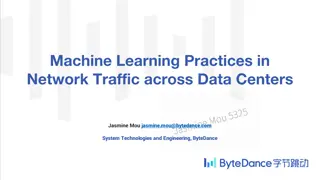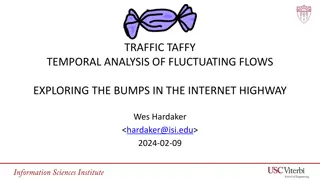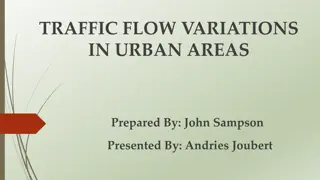Real-time Operations & Traffic Management in Christchurch
Operations center focusing on end-user experience, safety, and sustainability. Utilizes advanced technology for traffic monitoring, management, and enforcing regulations. Collaborates with various partners and stakeholders to ensure efficient operations.
Download Presentation

Please find below an Image/Link to download the presentation.
The content on the website is provided AS IS for your information and personal use only. It may not be sold, licensed, or shared on other websites without obtaining consent from the author.If you encounter any issues during the download, it is possible that the publisher has removed the file from their server.
You are allowed to download the files provided on this website for personal or commercial use, subject to the condition that they are used lawfully. All files are the property of their respective owners.
The content on the website is provided AS IS for your information and personal use only. It may not be sold, licensed, or shared on other websites without obtaining consent from the author.
E N D
Presentation Transcript
CTOC SNUG PRESENTATION CHRISTCHURCH TRANSPORT OPERATIONS CENTRE REAL TIME OPERATIONS TRAVEL INFORMATION TRAFFIC MANAGEMENT Ray Young MBA RTO Team Leader ray.young@tfc.govt.nz
CTOC LOCATION AND AREA OF OPERATION Christchurch - Second largest City in New Zealand Predicted largest population growth areas in New Zealand in next 10 years. Auckland, Christchurch, Selwyn, Central. CTOC Regions of Operation Christchurch, Waimakariri, Selwyn, Ashburton, Timaru
PARTNERSHIPS WORKING RELATIONSHIPS Regional ECAN CCC NZTA Media outlets (Radio, TV), Police, Fire, Ambulance, Central Hospital Contractors in the traffic industry Regional Councils (Waimakariri, Selwyn, Ashburton, Timaru) Local business leaders group National ATOC WTOC
FOCUS POINTS Focus on the end user - Travel mode agnostic Safety Environmental accountability Zero Carbon Footprint and managing disposals / end of life Technology Quality, well designed infrastructure Resilience (People and Technology) Security Networks and Assets Managing costs Moving beyond the Politics, Empire building and Protectionism. Just get on and do what is right
CTOC - STATISTICS Intersections and controlled crossings 378 Communication Hubs 89 Transport CCTV camera 430 Pedestrian Cameras 224 Vehicle Cameras Thermicam 3
SIGNALISED INSTALLS History of installs and predicted growth 21 20 19 18 15 12 10 10 7 5 1 2011 2012 2013 2014 2015 2016 2017 2018 2019 2020 2021
TECHNOLOGY - 1 Miovision Virtual Loops Using Edge Analytics. Single camera per intersection : programmable virtual induction loops gathering analytic information and vehicle classifications data Red Light running Trialling GATSO camera with CCC. CTOC had already tried designing custom analytics ( very expensive). Soon to be an off the shelf product or combined with cameras like GATSO Integration with Civil Defence HQ Work closely with Christchurch City Council integrate the transport technology capability into new Civil Defence HQ (CCTV and SCATS and VMS) for emergencies Thermicam Still trailing but very impressed to date. Extremely reliable and accurate. Used when standard induction loops are not suited HOV (High Occupancy Vehicles) enforcement Working on development of IR camera and analytics technology to count vehicle occupancy in private vehicles. Automated BUS lane enforcement Allow cars to cross bus lane but not use full length of bus lane Have developed Milestone camera programming for CCTV bus lane ANPR analytics to qualify usage of bus lane and enforce ticketing of vehicle breaches. Integrating remote access technology Reducing the cost of operation Installing managed POE switches for CCTV to reduce onsite visits when a simple remote reboot is all that s required
TECHNOLOGY - 2 Design and develop technology - integrated national network - regional resiliency Working at a national level to update our technology backbone structures (CCTV, SCATS). Promoting sharing and integration. One technology platform at a national level SPE - Server built but waiting on projects to get moving Environment Canterbury New Bus Priority system. Timaru project Transport trucks New technologies Working with Council to integrate new technologies (i.e earth quake monitoring) into existing transport traffic infrastructure Resilience Create resilient and distributed networks. Integrating with the new Christchurch City Council distributed infrastructure and opening gateways to a national NZTA technology infrastructure and support. Optimisation utilising SCATS variable engine and PARAMIX modelling. See next slide
EXAMPLE OF OPTIMISATION BENEFITS PARAMIX MODELLING USING SCATS VARIABLE INPUT Paramics models with SCATS. Built and tested ten models this past year. The models tested various scenarios including: Right turn arrow requests Roundabout replacements with signals Double diamond overlaps Single diamond overlaps New intersection layouts Merge lane length increases Flexilink verses Adaptive Cycle time reduction Right turn bay extensions Right turn closures.
CHALLENGES - 1 Environmentally Responsibility Reduce carbon footprint Develop a Product lifecycle Design for cost effective maintenance and eventual product disposal Optimise network to reduce carbon emissions, (Trial SPE for trucks Timaru ) Working out what technologies work best in the right environments - A return to tried and true for some environments . Example - Pedestrian thermal detection cameras, mixed results. Starting to remove them in some places and go back to basics Using Pole sockets but still trying to find balance between install cost and benefit Using uncomplicated and cheaper technology when suitable People capability learning to stand back from the front line and take the time to teach the new generation, Demystify the technology and simplify the operational processes Train more people Trialling new development technology Enable and encourage new technology development. Provide the canvas of the traffic signals infrastructure to test new ideas Define the trial parameters and timelines and reporting Be honest and accurate about results Don't leave old trials lying around Learn from mistakes keep developing
CHALLENGES - 2 Maintenance on the network Temporary Traffic Management Needs to be safe but becoming unworkable as extreme shift towards removal of all inconvenience Better identification and balance between safety v s inconvenience Correct installation and maintenance of equipment Going back to basics Not accepting mediocre installs or poor quality workmanship. Getting that sense of pride back in workmanship Move away from petty criticising of contractors. Work with and help develop Contractors - focus on development of all industry workmanship and skills Examples of issues Control cabinet quality issues Historical issues being resolved Induction loops failing or problematic Moving back to the basics How to get other automation devices to integrate with exiting systems like SCATS so there is the need for only one device and portal for information (Controller) . i.e MODBUS, CANBUS, Serial Data, edge device data, analytics outputs, I.O etc... Power monitoring of Controller cabinet both fixed and variable power loads without installing expensive Power Company monitoring in each controller cabinet.
